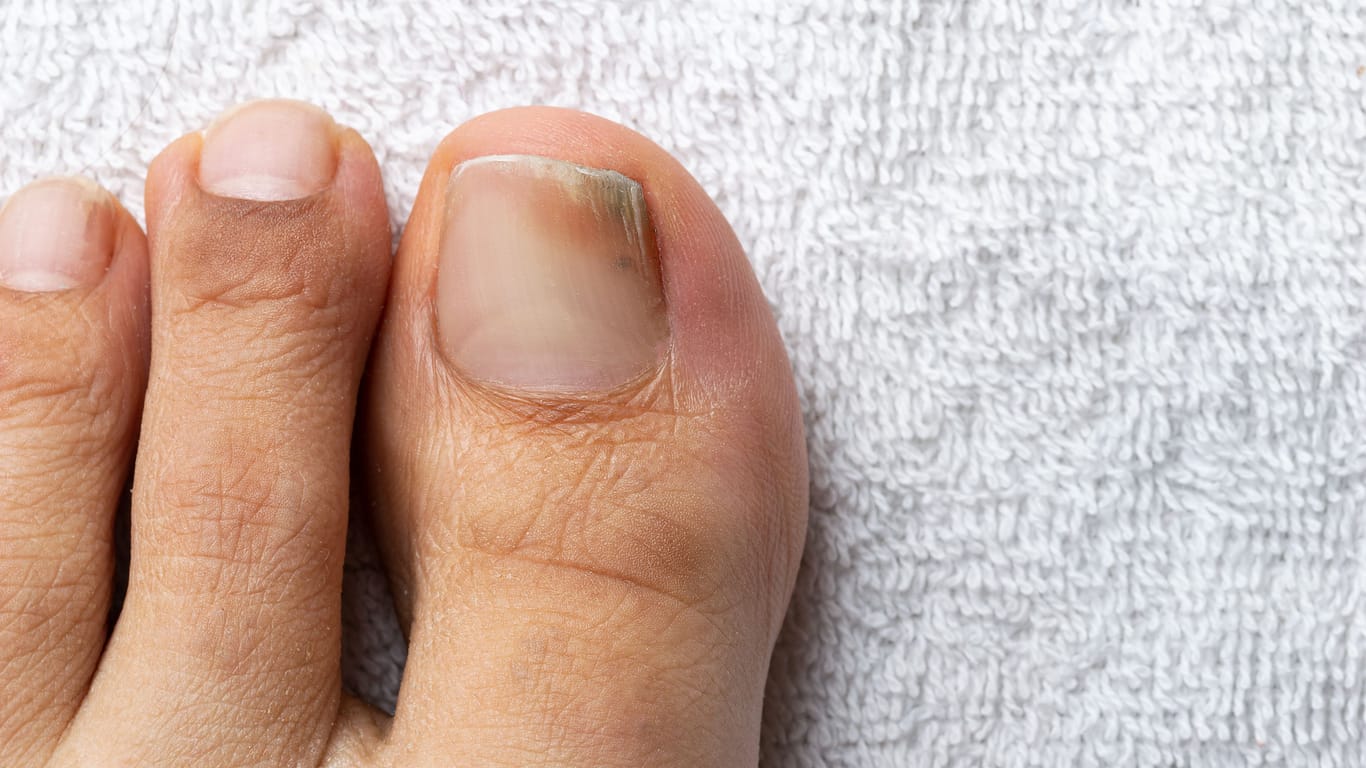Changes in the nail of the big toe can have numerous causes. For example, if the nail is black or brown in color, the reason could be an injury, for example if the person stubbed their toe.
However, nail fungus is also not uncommon (onychomycosis) to be responsible for discoloration or deformation on the big toe: Nail fungus is a relatively common disease – and when it occurs, it usually affects the big toe.
What does nail fungus on the big toe look like?
Regardless of whether it is on the big toe or on other toes or fingers: white-yellowish to brownish discoloration of the nail is typical for nail fungus. The affected nail
- looks dull,
- becomes brittle,
- thickens and/or
- changes in shape.

Usually the front or side edge of the nail is affected first – because from there the fungi can penetrate the nail particularly easily.
Sometimes nail fungus also looks less characteristic. For example, the nail may look black. Or white: Then only the upper layers of the nail are affected, which can be recognized by small white dots or white areas. However, this rarely happens. It also rarely happens that the fungus penetrates directly into the nail root.
Nail fungus: Why is the big toe usually affected?
The fact that nail fungus occurs first on one of the two big toes is due to their position. The big toe is on the outside of the foot. This makes him more susceptible to minor injuries – for example from shoes that are too tight. This makes it easier for fungi to penetrate the nail or the surrounding skin and spread from there.
Due to their external position, the little toes are also more often affected than the middle ones. If nail fungus is left untreated, it often spreads to the other toes.
Changed nail on the big toe: what to do?
If the nail change on the big toe persists or worsens, those affected should consult a doctor. On the one hand, this is important to determine whether it is actually nail fungus. Because other, sometimes primary illnesses can also be the cause.
On the other hand, nail fungus must be treated professionally because it does not go away on its own. External treatment with varnishes or creams can help, but is often not enough. The doctor will then prescribe tablets.
In addition, affected people should pay attention to thorough hygiene so that the fungus cannot multiply.
Treating nail fungus requires patience: it often takes several months until the pathogens are completely eliminated.
Conclusion
Nail fungus is particularly common on the big toe. This is particularly susceptible to small injuries, which makes it easier for pathogens to penetrate. Nail fungus can usually be recognized by white-yellow or brown discoloration, thickening and deformation. To be sure whether it is actually nail fungus on the big toe, those affected should seek medical advice.

